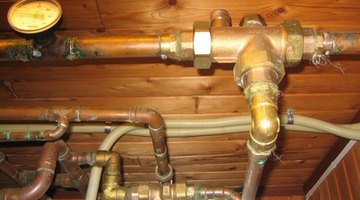What is the Difference Between Pipe Thread & Conduit Thread
Thread refers to an internal ridge, or helical structure, used to convert between rotational movement, or allow an external (male) thread, or outer thread diameter, to rotate along the axis of an internal (female) thread to fasten them together.

Pipe threads and conduit threads enable fittings to join together, but vary in design.
Definitions
Pipe thread refers to a helical, or spiral shaped ridge, located at one end, or both ends, of a pipe that enables two pipes to join together. Conduit thread refers to a helical ridge located at one end of a pipe that tapers, or is designed with a narrower cut end.
Sealing
Pipe threads, because of their square shape, function as a mechanical seal or device used to join components together to contain pressure. Conduit threads taper to form a tighter, close fitting seal able to better withstand leaks.
Applications
Pipe threads, commonly used in high pressure pipe lines in industrial systems, are also utilized in plumbing applications. Plumbers, when using pipe threads, apply sealing compounds to the joints for added leak protection. Conduit threads are designed for use in liquid distribution piping systems because of their ability to form a wet seal.
References
- Drew's Plumbing: Glossary of Plumbing Terms-Straight Pipe Threads
- "Black & Decker The Complete Guide to Plumbing;" Editors of Creative Publishing; 2008
Resources
- "Complete Plumbing (Stanley Complete)"; Stanley; 2008
Photo Credits
- plumbing image by Inger Anne Hulbækdal from Fotolia.com
- plumbing image by Inger Anne Hulbækdal from Fotolia.com
More Articles



